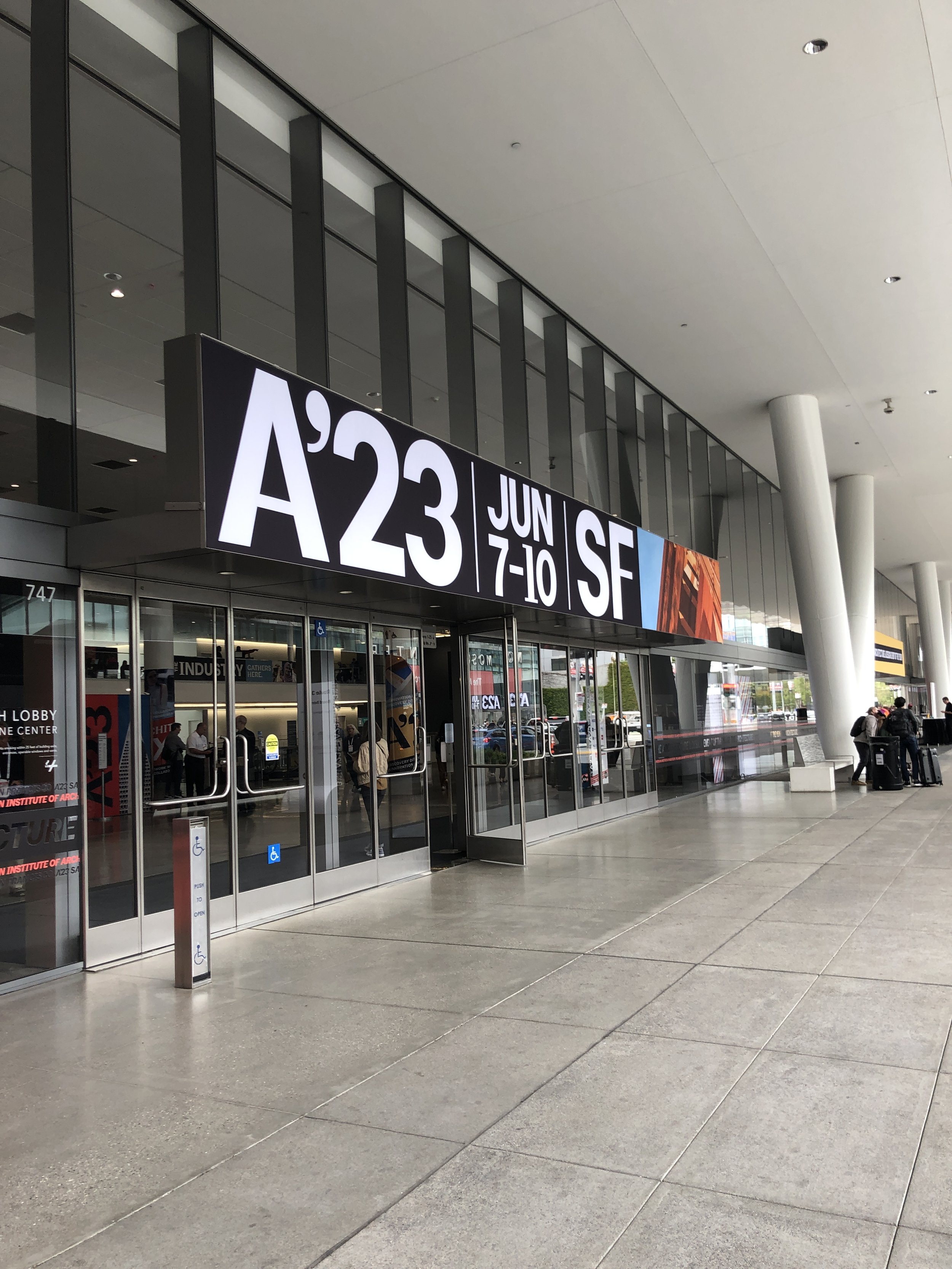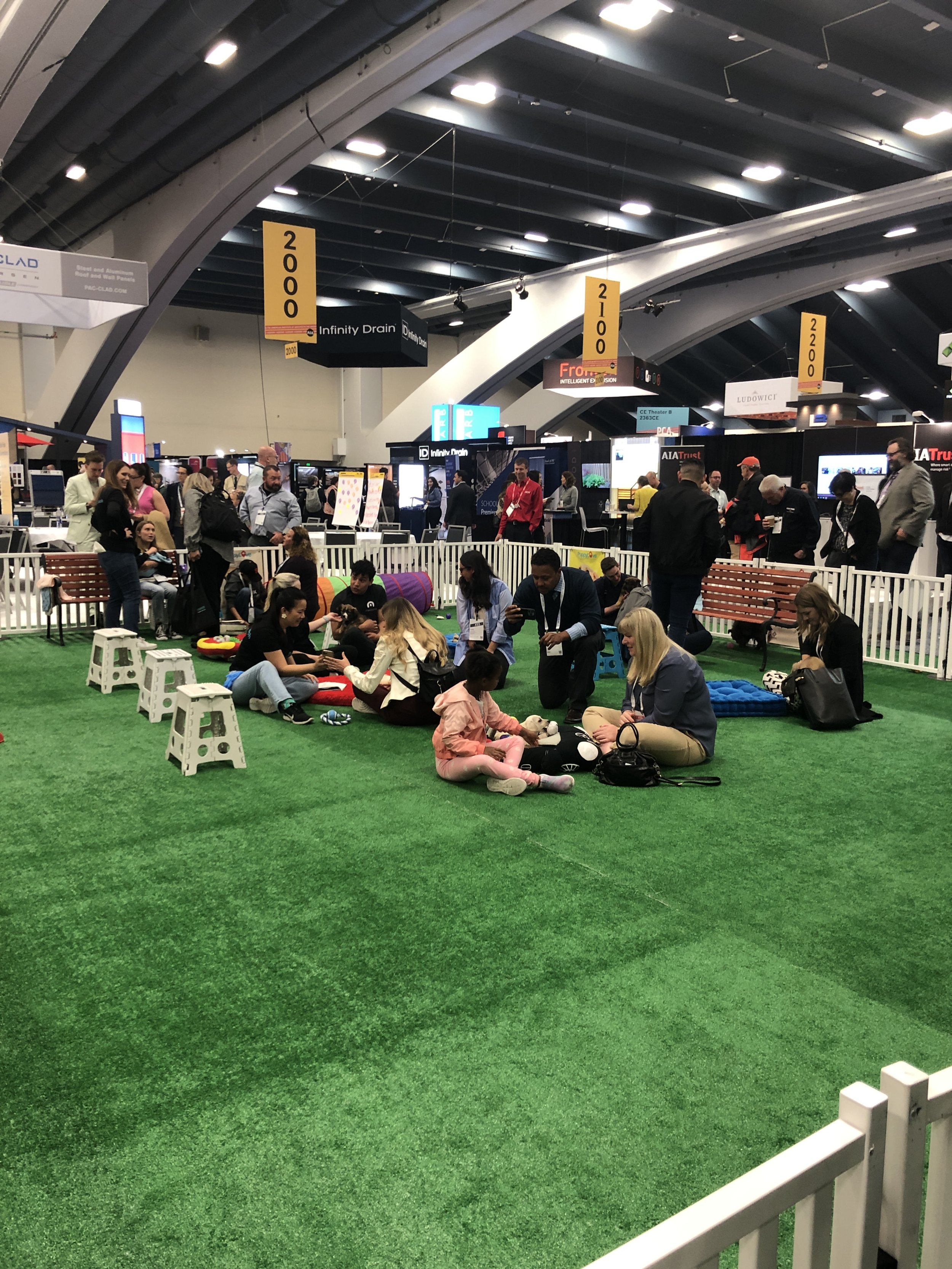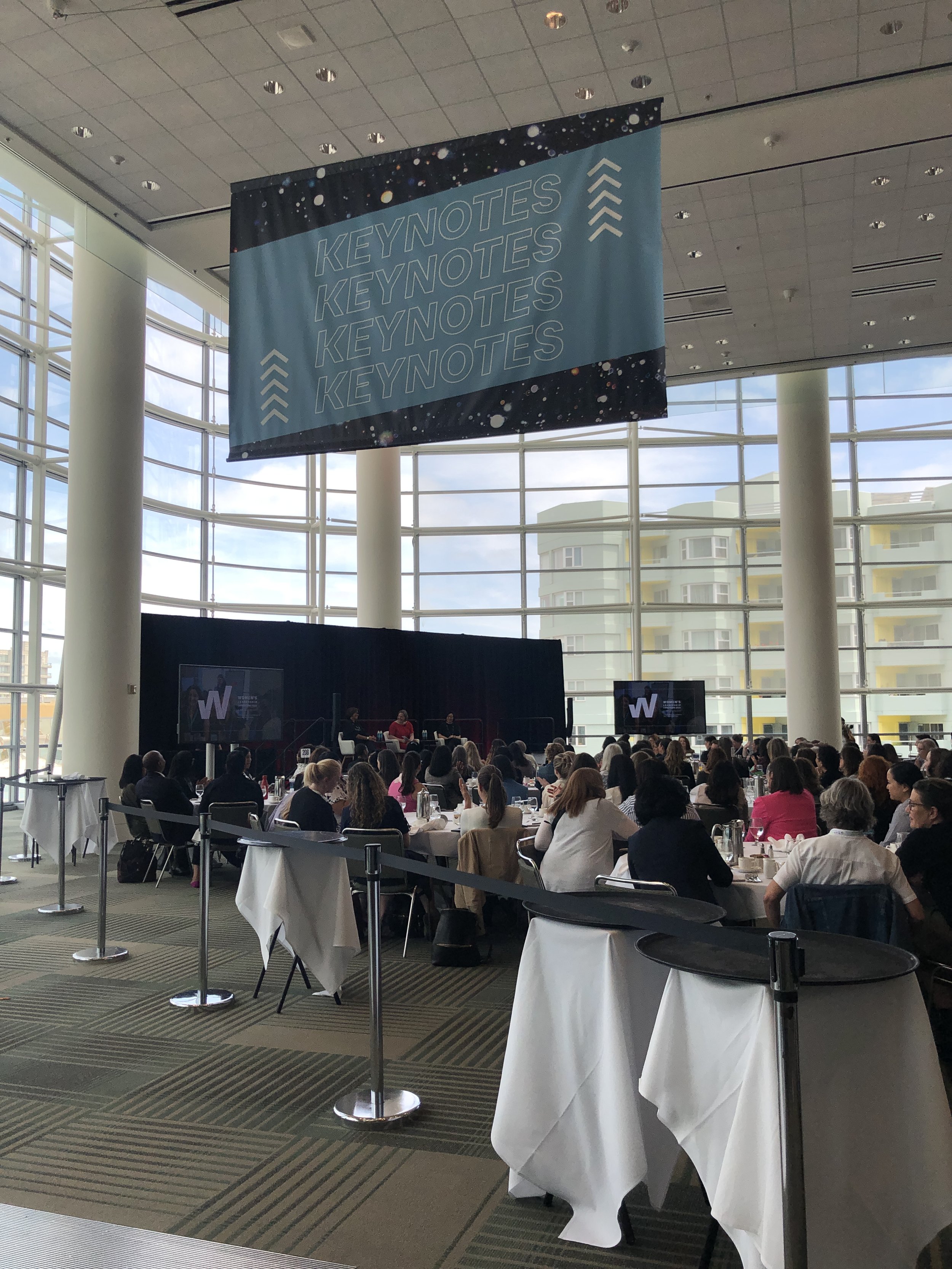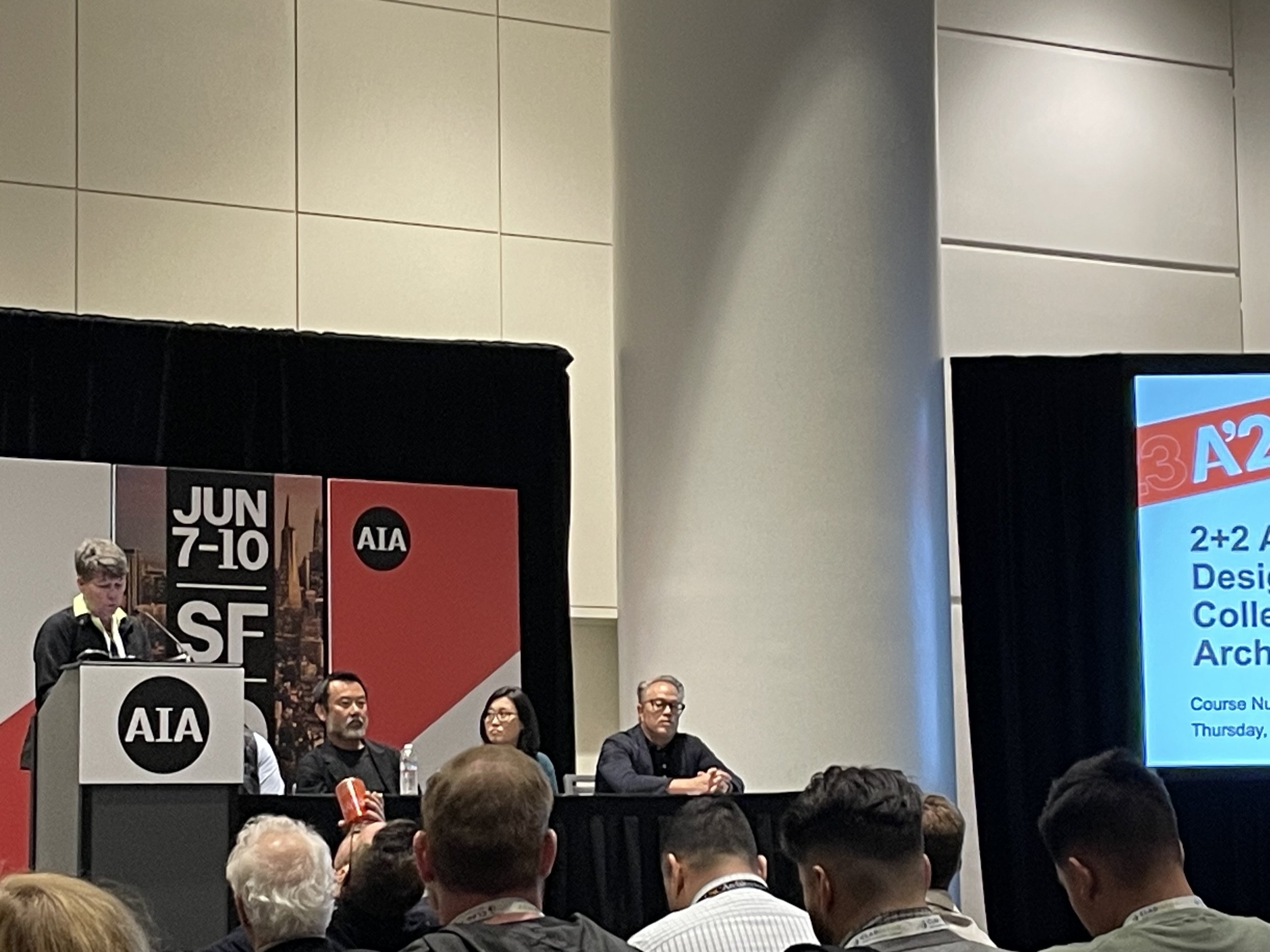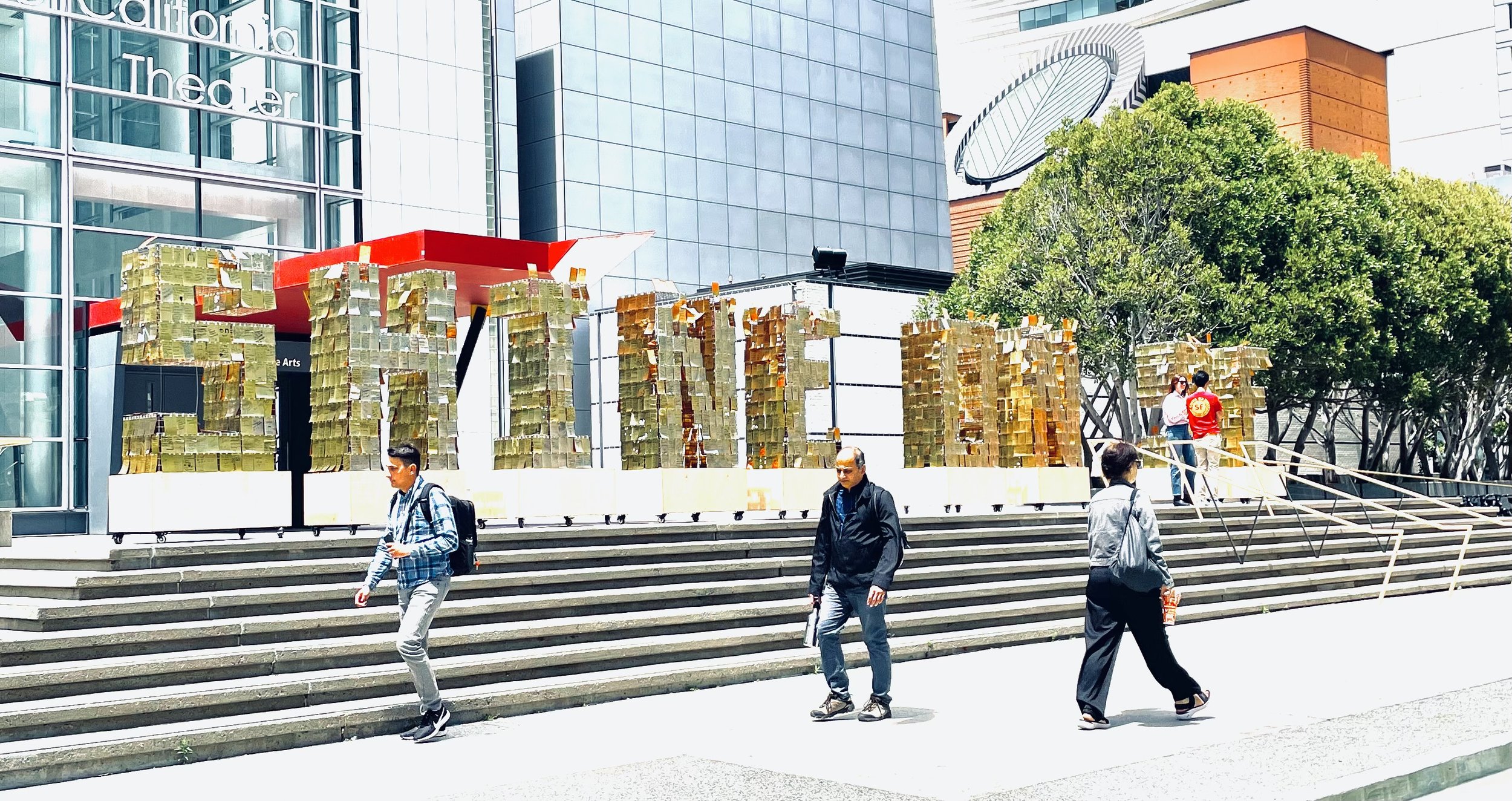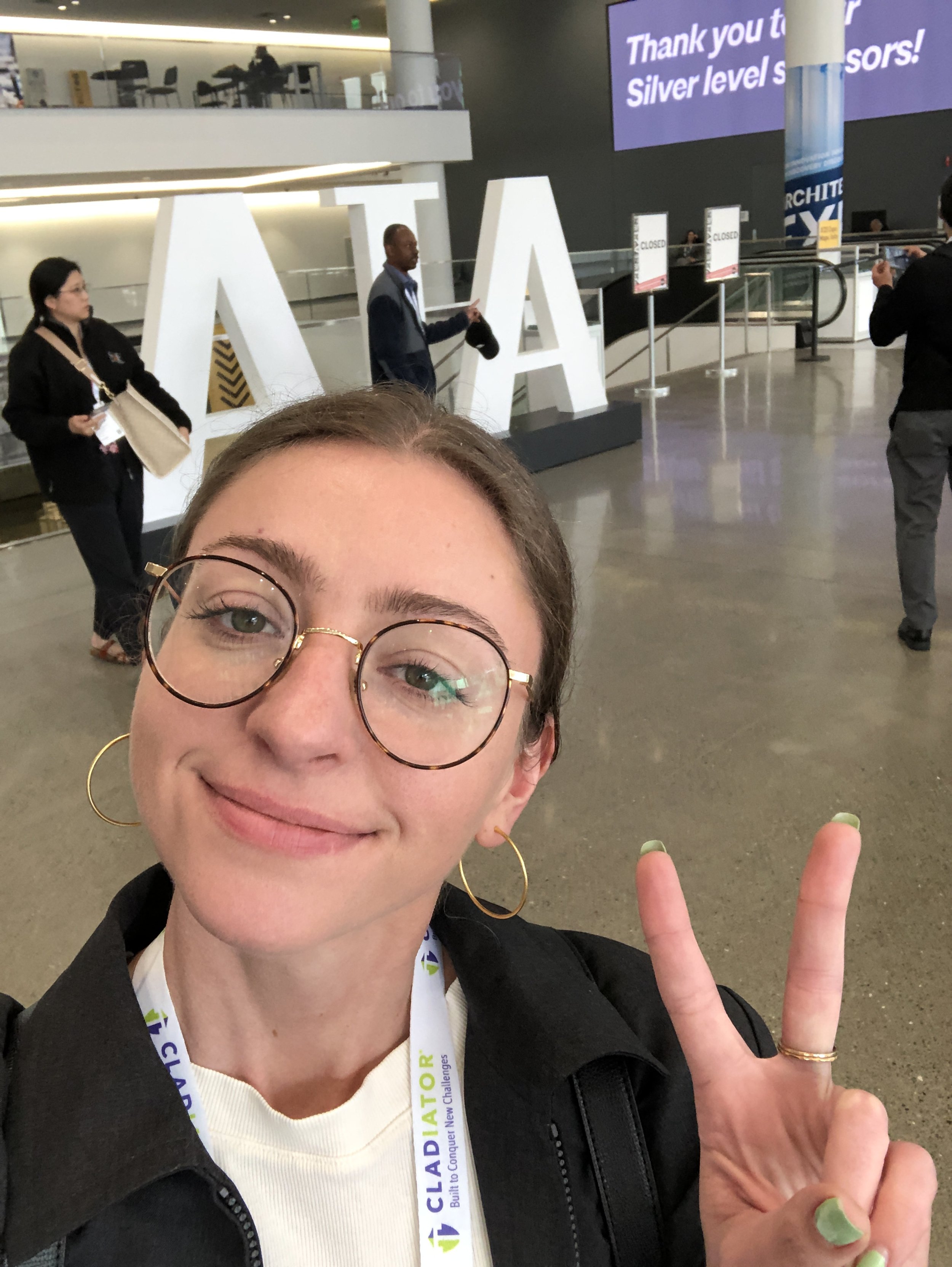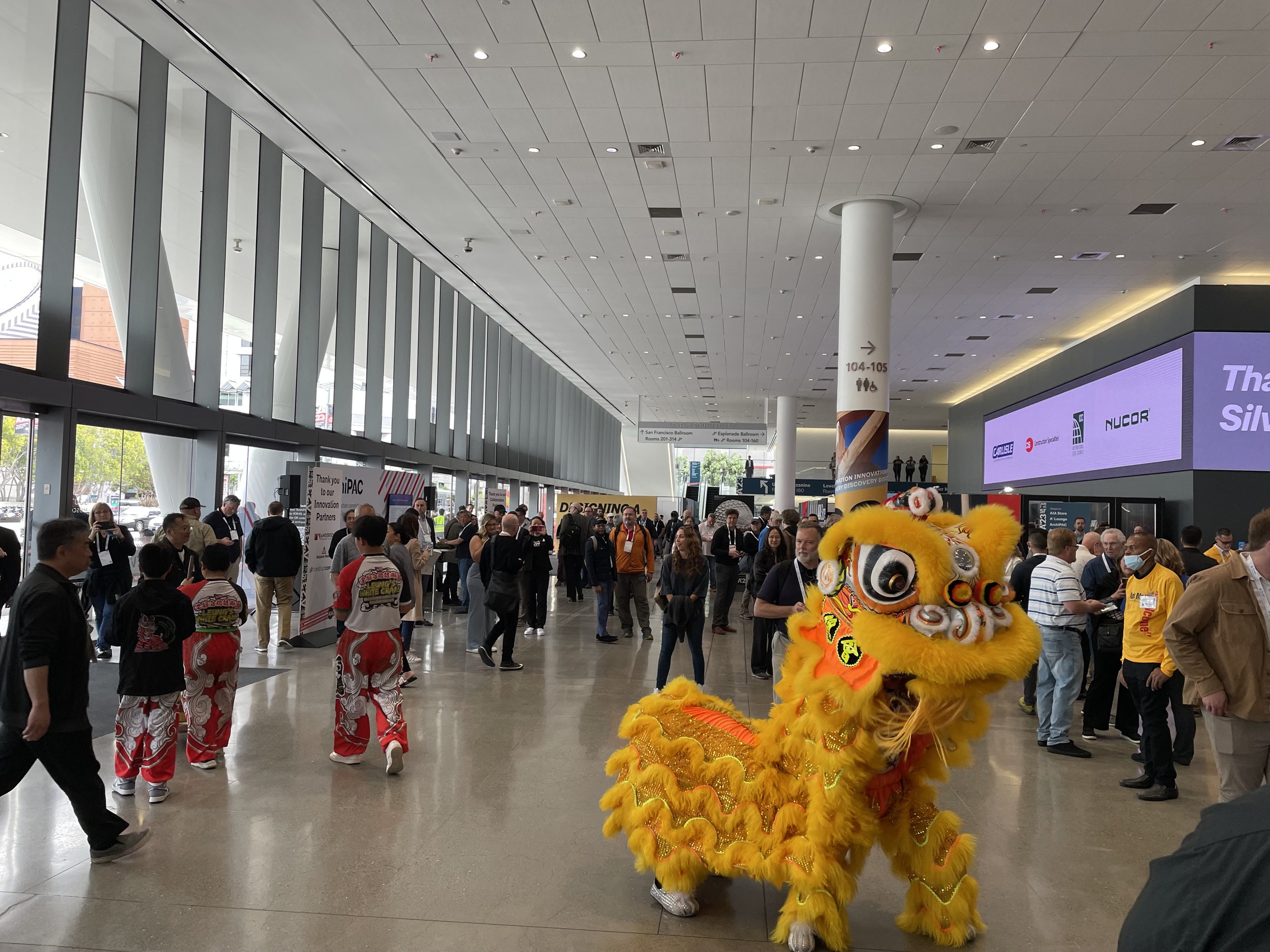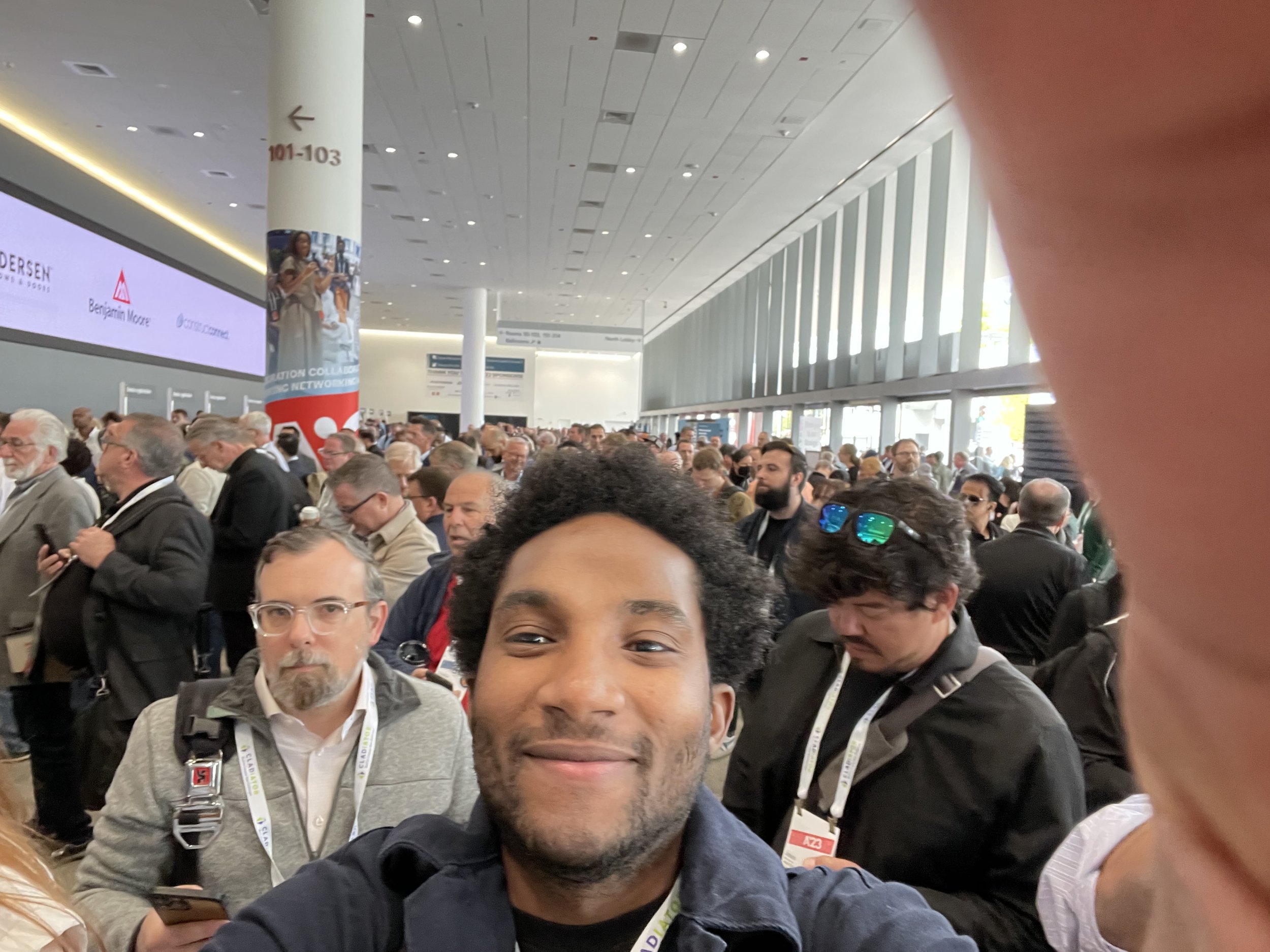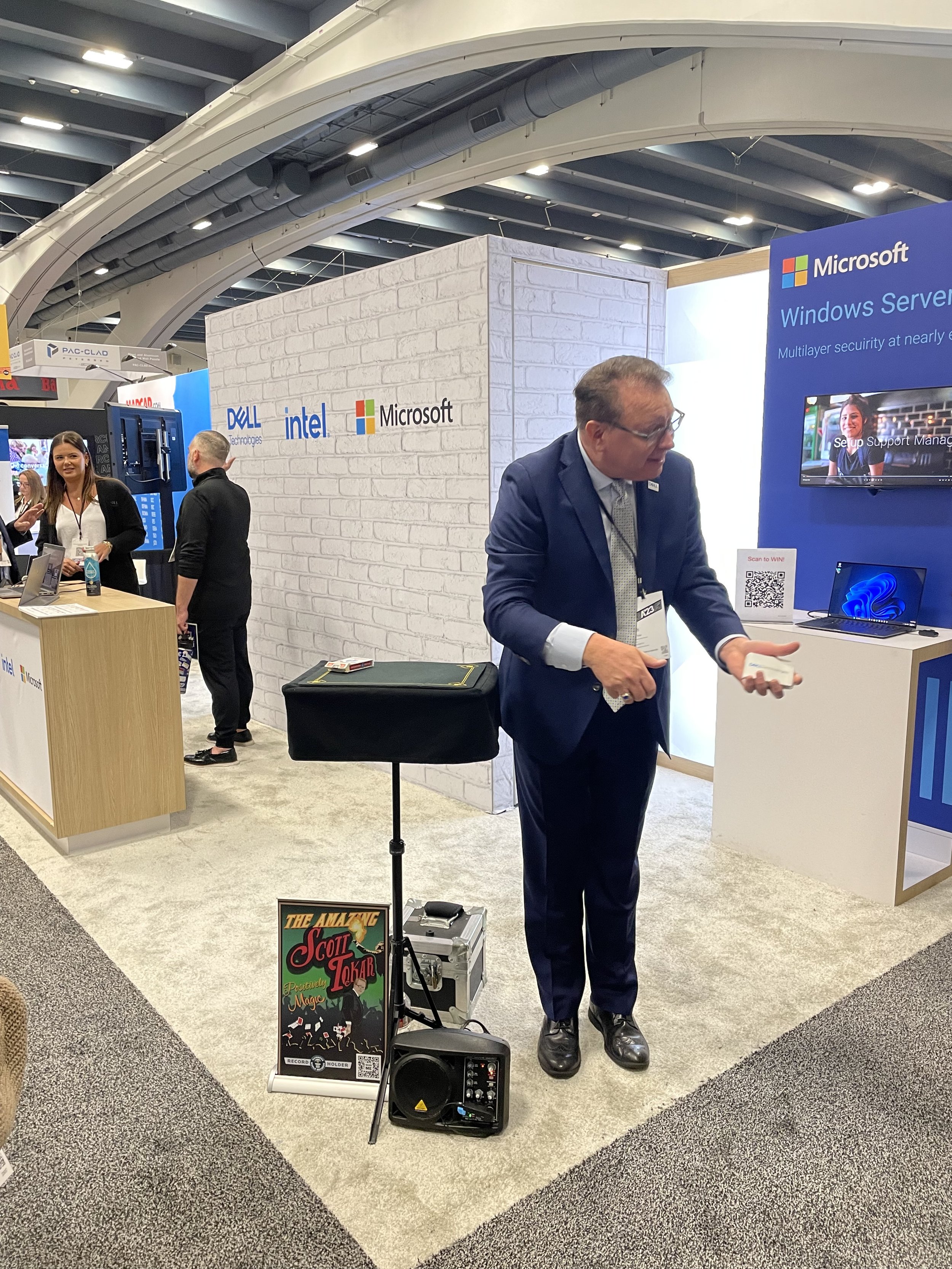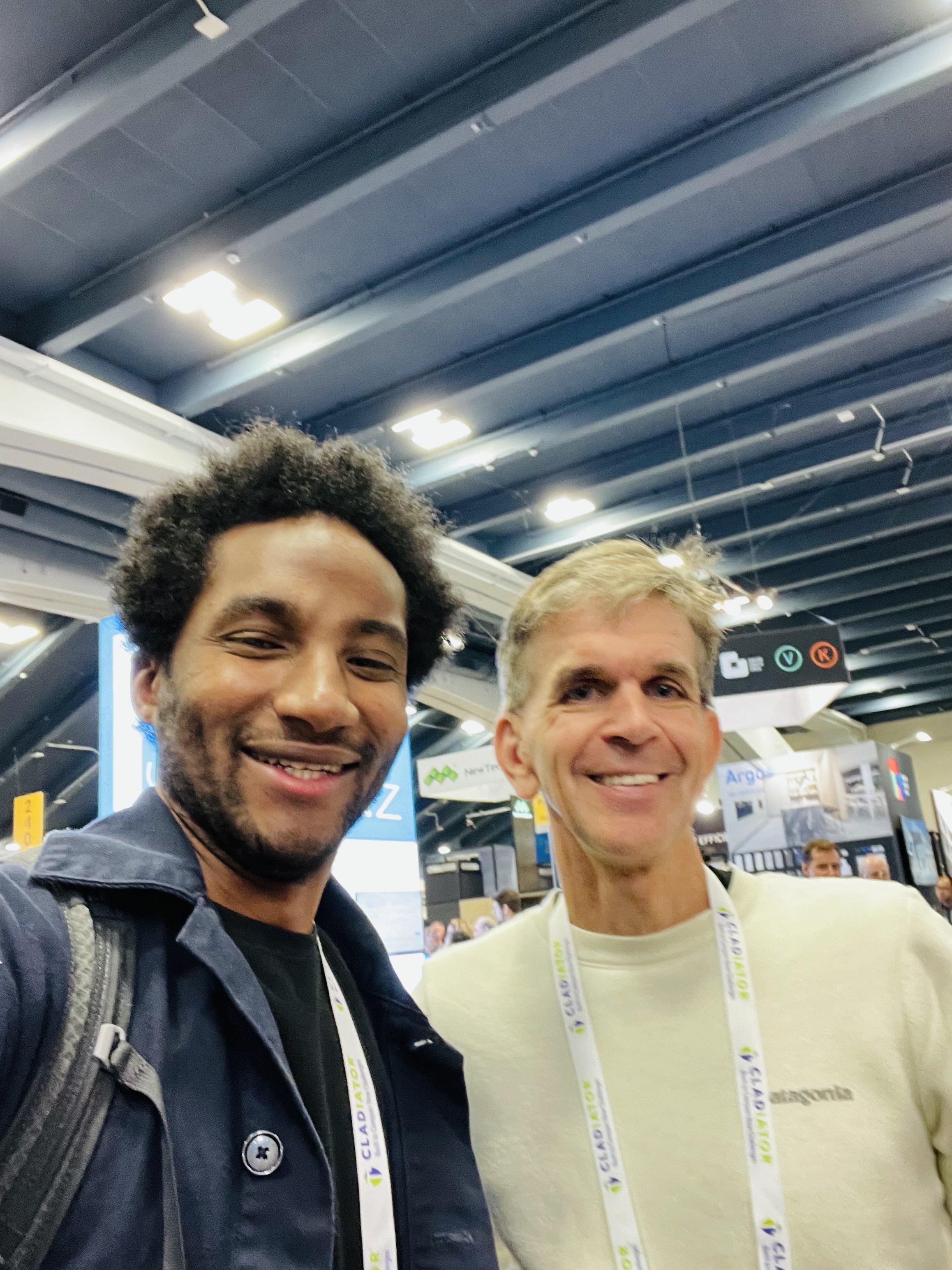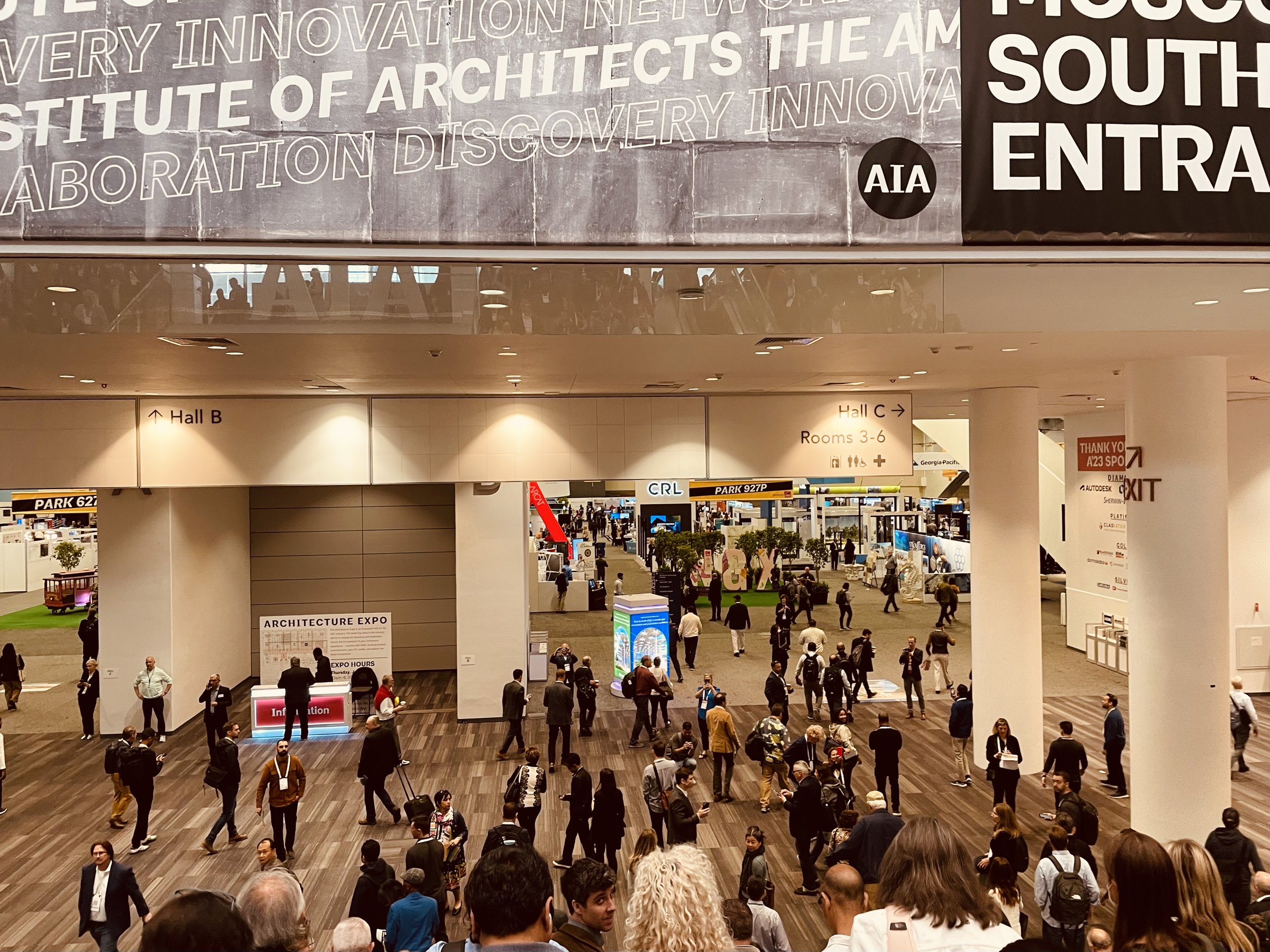(standing, l to r - Nicole Becker, Mohamed Fakhry, and Evon Calebrese)
Please enjoy this week's Message From our AIA Oregon Emerging Professional Committee (EPC) leaders as they reflect on their A'23 experience.
Mohamed Fakhry, Associate AIA
AIA Oregon Portland EP Co-Chair, CoEDI Chair
This year AIA Conference in San Francisco was a thrill! It was my first but it most definitely won’t be my last!
I had fun meeting, engaging, and networking with some of the industry most talented and inspiring architects, designers, sustainability leaders, environmental, and Design Justice advocates!
The keynotes, expo booths, happy hours, seminars, workshops, city tours, and firms visits I attended were each full of learning, uplifting, and hope carry!
Making the world a better place for us all to shelter and dance and aspire and celebrate who we are as community members from all creeds and shades and genders but humans beings firsthand, is hard work, it is exhausting but it can be done, one building clay, one street block at a time.
Attending A’23 reminded me of all those beautiful and important things we all endear as practicing and aspiring architects. However, the conference foremost, made me believe in the power of design to positively impact lives and to keep breaking the boundaries beyond what architects can wholeheartedly contribute, when it comes to rebuilding our broken and divided communities and pushing the layers of innovation, accessibility, diversity, equity, and inclusion a little farther within the profession.
Thank you to AIA Oregon for giving me the opportunity to attend and to my firm ZGF for accommodating my presence!
Excited for A’24!
Evon Calabrese, Associate AIA
AIA Oregon, Portland EP Co-Chair
This was my second time attending AIA National but an entirely different experience. My first attendance was in 2016 as a fledgling designer with no clear direction. This time, with more knowledge, experience, and drive under my belt, I attended with a clear focus.
My experience at A’23 centered around three themes:
Social Emotional Intelligence
Women in Architecture
Participatory Design
In a session titled “Optimizing Team Collaboration” we learned about the neuroscience behind defensiveness and that our brain can process a defensive response much faster than a logical one, which is useful in survival situations, not so much for collaboration. By identifying the physical sensations, you experience when in a defensive state (for me it’s racing heart and sweaty palms), you can then find tools to help bring you out of that state: taking a deep breath or a sip of water or even admitting you’re feeling defensive. Another key tip from this session was how to make decisions efficiently on consensus. Rather than a “this is my choice” approach try thinking of things as “I can support this” / “I cannot support this” / “I need more information before giving an answer”. This type of dialog can move expedited decision making without getting stonewalled or conceding to the loudest voice in the room.
Growing up my parents had a small architecture/landscape architecture practice. Not only was my mother a principal architect, at the time she was the ONLY licensed architect in our region of south/central Vermont. Her best friend from college was also a principal architect, so while I knew architecture was at one time a male dominated field, I thought since these two ladies are principals’ things have changed. The reality is, while architecture school is fairly even, as you move up the profession the disparity grows.
Women make up:
46% architecture students
39% Associate members (this is the group I am in)
22% AIA members
18% Firm Partners
?% Managing Partners is unknown
I attended several sessions centered on participatory design and honoring lived experiences.
In the session “Empowering Communities through Empathic Listening” we learned about the process of discovering and distilling ideas with a community using old-school tools like a disposable camera and the importance of creating an “experience map” for different personas.
I also had the privilege of attending a workshop specific to behavioral health spaces that was led by two BH design specialist as well as a provider, and an architect who has experienced a psychotic break followed by psychiatric treatment. The presenter shared annotated sketches from her time in inpatient treatment which exemplified how undignified, confined, and sterile her experience was. A big takeaway from this session is as designers we often employ design strategies to promote dignity and autonomy, but if they do not align with the facility operations they will not work. This is not much different than handing over a NetZero building with no instruction manual or education for the building operators.
Thank you to AIA Oregon and my employer Clark/Kjos Architects for sponsoring my attendance. I returned to Oregon with a bad cold but a ton of inspiration and motivation for tackling some of our states most pressing issues - mental health, substance use, and homelessness. I am also feeling extra motivated to obtain my architecture license and slowly move the needle on the percentage of licensed women.
Nicole Becker, AIA
AIAO Young Architect Representative to the Young Architect’s Fourm
As Oregon’s Young Architect Representative (YAR) on the National Young Architect’s Forum (YAF), I had the opportunity to help facilitate a table at the Mini MBA: Mastering the Business of Architecture session where there was exuberant discussion on what being a firm leader really means and the impacts of AI on the profession. The group discussed AI from the lens of excitement vs. fear and the ways AI can enhance our practice. Another takeaway of the conference for me was a session I attended, hosted by the Large Firm Round Table, as a panel of four large firm CEOs discussing EDI in their firms and taking a critical look at how we must take actionable steps now to improve the EDI in our firms. The 2023 Whitney M. Young Jr. Recipient, Robert Easter, FAIA, NOMAC was in attendance, and he reinforced his comment upon acceptance of his award that, “50 years ago, the percentage of architects who identify as Black or African American was 2%. Five years ago, it was 2%. Today is remains at 2%.” We have work to do.
For me, one of the biggest joys of Conference is being surrounded by inspiring, talented, and innovative professionals that always leave me feeling engaged, re-fueled, and excited for the future of practice. I extend immense gratitude to ZGF for their support of my role as Oregon’s YAR and my attendance at Conference. Now let’s get to work creating positive change and impact in our communities!


